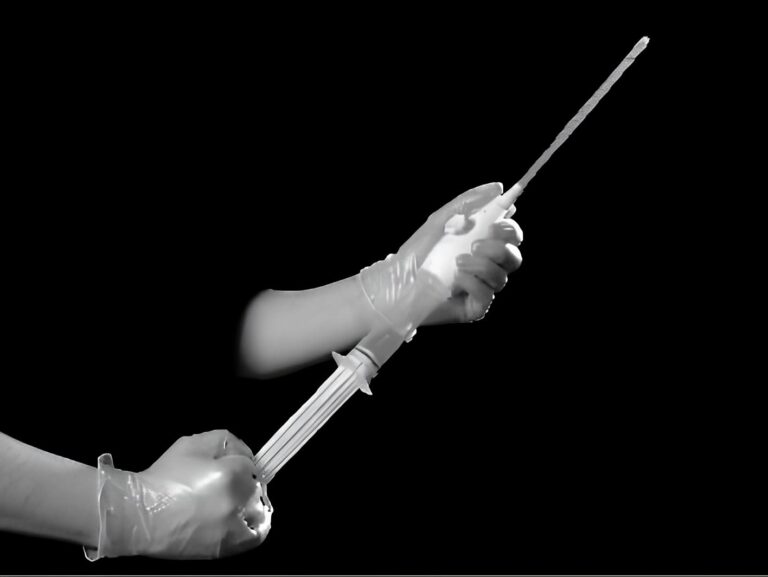Although the modern international population control movement began after WWII, its roots actually go back far further—to a time when many of the largest international contributors to worldwide population control first began sterilizing their own citizens.
Swedish Eugenetics – Swede Sterilization in 1940s
In 1943 Maria Nordin, a 17-year-old Swedish girl, was diagnosed as suffering from a “genetic inferiority” that, in the interest of the Swedish welfare state, was best not passed on to any offspring.
A lackluster student, Maria had fallen behind in her studies. Though a school report described her as “kind, obedient and nice in appearance,” doctors said her family had a history of alcoholism, promiscuity and mental illness. Accordingly, on instructions from the headmistress and physician at the reform school for girls that Maria attended, her ovaries were removed.
Unfortunately, no one bothered to check her eyes. Maria, who had no glasses, could barely see the blackboard. The school’s doctor, however, classified her as “feebleminded” and “unable to raise children.” The National Board of Health agreed, and Maria Nordin became one of 1,327 Swedes who were sterilized that year under the country’s sterilization program which began in l935.1
Nordin, still alive at 72, to this day “carr[ies] a hatred that never leaves [her] heart” for those who denied her the ability to have the children and the kind of life she so much wanted. Only recently has she come forward to disclose her terrible secret, and in the process start a public examination of Sweden’s little-scrutinized sterilization program, which finally ended in 1975 after 62,888 officially recorded state-sponsored procedures.
Sweden’s “barbaric” system
Although Sweden’s sterilization program was abandoned in 1975, the reason behind the shift in government policy was more pragmatic than repentant: abortion had recently been legalized and newer, more effective forms of birth control were now available to replace the surgeon’s sterilization scalpel.
Swedish Social Minister Margot Wallstroem, who in 1996 rejected Miss Nordin’s application for damages for her forced sterilization, has officially apologized for the nation, saying “What happened was nothing but barbaric.” This was the first acknowledgment by the government that the program, although legal, was morally wrong. The Swedish government has created a national commission to examine the history of the sterilization program and to devise a plan to compensate its victims, an estimated 20,000 of whom are still alive.
During its 40 years of operation, the Swedish sterilization program targeted women (and a considerably lesser number of men) who were judged to be of “inferior” racial types, or of “poor or mixed racial quality,” meaning with learning difficulties or from poor families who were not of the common Nordic blood stock. The feebleminded and mentally deficient were especially singled out for state ordered sterilizations. Although nearly all of the sterilizations were officially recorded as “voluntary,” the victims were ordered to sign permission slips as a condition for release from institutions, or to keep their children and various welfare benefits.
A prime consideration of the sterilization program was to lower the cost of Sweden’s “cradle-to-grave” welfare system, which was allegedly overutilized by inferior types. One woman was sterilized because of her “chronic poverty.” Another was selected simply because she already had three children.2 An “asocial way of life”- by which was meant severe alcoholism, incorrigible vagrancy or serious criminality- was an indication for sterilization of those “obviously unfit” to care for their children.3
The allegedly voluntary nature of Sweden’s program is further questionable in view of those who were authorized — indeed mandated — to submit an application for sterilization to the national Health Board. Besides a request from the person on whom the sterilization was to be performed, a class unlikely to be large at that time in Sweden’s history, and minors or incompetents whose guardians sought their sterilization, six categories of public officials and doctors were specifically authorized and “obliged” to seek the sterilization of various classes of “unfit” persons whom they might encounter in the course of their duties.
Among the six categories were: (1) Public Welfare Board members for those persons (or whose mates or minor children) who receive public welfare; (2) Child Welfare Board members for those persons or their children who receive child welfare aid; (3) the doctors delivering care to patients receiving public medical aid; (4) the doctors responsible for the institution or providing the care for persons treated in a public hospital or a public medical facility; (5) the doctors or superintendents of public institutions other than those already enumerated; and (6) certain doctors in public medical service.4 The emphasis on reducing public welfare costs is obvious.
The Swedish law placed particular importance on the sterilization of the “feebleminded,” especially those due to be discharged from institutions. The National Health Board ordered that every feeble-minded person prior to his discharge should be examined with regard to his “qualification for sterilization.” The strictness of this rule is evident from the requirement that in the cases where feebleminded persons were not sterilized prior to discharge, the reason for not doing so had to be recorded in the files of the person concerned.
Throughout the years during which the Swedish program operated, many sterilizations were done for reasons which had nothing to do with feeblemindedness or mental deficiency. During the period 1935-39, for instance, sterilizations were performed on individuals who had suffered from ‘“weakness in reading and writing,” or the “inability to support oneself,” syphilis, alcoholism and other “anti-social tendencies,” allegedly “hereditary abnormalities,” including blindness, deafmuteness, hemophilia and epilepsy (125 recorded cases). At least 69 sterilizations were also performed on mothers allegedly “wornout” from multiple births.5
Non-mental considerations continued to be a major reason for sterilization during the period 1 July 1941-31 December 1948. The second largest category (after mental deficiency) for sterilization at that time was women “exhausted through many childbirths,” with a total of 2,162 such cases being officially recorded. There were also 567 sterilizations performed for epilepsy and 236 for alleged “hereditary diseases and defects.”6
Other nations also sterilized
Adverse publicity from Sweden’s sterilization program led to the review of old sterilization programs in other countries, including Austria, Switzerland, Denmark, Norway, Finland, France, Belgium and the Czech Republic. Although all these sterilization laws were legal and largely non-controversial at the time they were enacted by democratically elected governments — and had largely been forgotten or long ignored — they are now a source of public embarrassment and scrutiny following the revelations from Sweden.
Eugenic sterilization was first introduced into Europe in Denmark, which enacted the first such law in 1929. In a few years time, the Nordic nations of Norway and Sweden (1934). Finland (1935), Estonia (1936) and Iceland (1938) all followed suit. The most notorious eugenic sterilization law of all, that of Nazi Germany, was enacted in 1934.
In each instance, the new laws were patterned after similar laws in the United States, which had led the way into the “brave new world” of eugenic sterilization.
US sterilizations led the way
The first eugenic sterilization bill in history was introduced in 1897 in the Michigan legislature, but failed passage by just a few votes. Pennsylvania passed the nation’s first sterilization law in 1905 but it was vetoed by the governor.7 Finally, in 1907, Indiana became the first state to enact a eugenic sterilization law. The Indiana law permitted the compulsory sterilization of “confirmed idiots, imbeciles and rapists” in state institutions as long as a committee of’ “experts” agreed that the individuals were beyond hope of improvement.8
During this period, however, superintendents of various state mental institutions were, without benefit of law, secretly sterilizing (generally by castration) some of the feebleminded and idiot inmates in their care. The most notorious incidents of these illegal sterilizations occurred at the Indiana State Reformatory, an institution for delinquent boys. Between 1899-1907. Dr. H.C. Sharp, the institutional physician in charge, experimented on most of his young inmates to develop a new surgical sterilization procedure for males, the vasectomy. Altogether, Dr. Sharp sterilized at least 465 young men.9
Back in Pennsylvania, despite a number of attempts, the state never managed to pass a sterilization law. That little detail, however, did not prevent the forced sterilization of at least 270 inmates of the Elwyn State School between the years 1889 and 1931.10
Following the lead of Indiana, eugenic sterilization laws were quickly enacted in 24 more states prior to a 1927 ruling of the US Supreme Court on the constitutionality of’ the practice. Seven of’ these laws were declared unconstitutional by state or Federal courts (Indiana, Nevada, Iowa, New Jersey, New York, Michigan. and Oregon); new sterilization laws, which went unchallenged legally, were subsequently reenacted by Indiana, Iowa, Michigan and Oregon. In all, prior to the Supreme Court’s ruling, 22 states had valid eugenic sterilization laws on the books (Indiana, Washington, California, Connecticut, Iowa, North Dakota, Kansas, Michigan, Wisconsin, Nebraska, Oregon, South Dakota, New Hampshire, North Carolina, Alabama, Montana, Delaware, Virginia, Idaho, Utah, Minnesota, and Maine).11
“Three generations of imbeciles”
In its only ruling on the legality of state eugenic sterilization laws, the U.S. Supreme Court ruled 8-1 on 2 May 1927 in the Virginia ease of Buck v. Bell, that the compulsory sterilization of mental detectives and others, under careful state safeguards, was constitutional. The case has subsequently become notorious as one of the Court’s greatest miscarriages of justice, and is generally ranked among such other Supreme Court legal atrocities as the Dred Scott decision (slavery), Plessy v. Ferguson (segregation), Korenmatsu v. United States (Japanese wartime internment), and Roe v. Wade (abortion).
Carrie Buck, an 18-year-old feeble- minded woman in Virginia’s State Colony for Epileptics and Feebleminded, was the daughter of a feebleminded mother in the same institution, and the mother of an illegitimate feebleminded daughter. The Colony’s superintendent, Albert S. Priddy, selected Carrie for sterilization, a decision that was upheld by two Virginia courts prior to an appeal to the U.S. Supreme Court.12
The Virginia statute in question provided for the superintendents of state institutions for mental incompetents to direct the sterilization of persons under their care “in the best interests of the patient and society .” The sterilization operation, however. could not be carried out unless a “board of experts” prescribed the same treatment. Patients had the right to defend themselves before the board, or in appeals to the higher courts of the state.
This protocol won the expressed approval of the U.S. Supreme Court, which, in an opinion written by the legendary Justice Oliver Wendell Holmes (joined by such judicial luminaries as Louis D. Brandeis and William Howard Taft), held that, “so far as procedure is concerned the rights of the patient are most carefully considered, and as every step in this case was taken in scrupulous compliance with the statute… . there is no doubt that in that respect the plaintiff… has had due process of law.”13
The Court further held that inasmuch as the “public welfare may call upon the best citizens for their lives [in wartime] it would be strange if it could not call upon those who already sap the strength of the state for these lesser sacrifices [sterilization] .…”
Justice Holmes’ remarkable, and oft quoted, obiter dicta followed: “It is better for all the world, if instead of waiting to execute degenerate offspring for crime, or to let them starve for their imbecility, society can prevent those who are manifestly unfit from continuing their kind .… Three generations of imbeciles are enough.”
American eugenicists lauded the decision, as did the nation’s premier public health group, the American Public Health Association. Armed with the pronouncement of
“constitutionality,” eugenic sterilization spread into Mississippi (1928), West Virginia and Arizona (l 929), Vermont and Oklahoma (1931), and North Carolina (1933). The decade of the 1930s was the highwater mark of eugenic sterilization in the United States, with sterilization laws on the books of 28 states and some 25,000 sterilizations officially recorded throughout the nation during the period.
There was only one hidden, festering problem at the very core of the miserable business: the Supreme Court’s decision in the Carrie Buck case was based on a fraud — neither Carrie, nor her mother, nor Carrie’s illegitimate daughter were mentally deficient!
Endnotes
1 Dean Murphy, “Sweden’s shameful chapter in history,” The Sun (Baltimore), 9 September 1997, 2A. reprinted from The Los Angeles Times.
2 Weintraub, “Sterilization in Sweden: its Law and Practice,” American Journal of Mental Deficiency, Vol. 56, No. 2, October 1951, 364-74, at 366.
3 Ibid., 368.
4 Ibid., 368-9.
5 Ibid., 372.
6 Ibid., 373.
7 Gosney and Popenoe, Sterilization For Human Betterment (New York: Macmillan Company, 1930), 15.
8 Gardella, “Eugenic sterilization in America and North Carolina,” North Carolina Medical Journal, Vol. 56, No. 2, February 1995.
9 Kevles, In the Name of Eugenics (New York: Alfred Knopf, 1985), 93.
10 Robitscher, Eugenic Sterilization, (Springfield, Illinois: Charles C. Thomas, 1973), 7.
11 Landman, Human Sterilization ( New York: Macmilan Company, 1932), 54-91.
12 John H. Bell’s name became connected to the case when he succeeded Priddy, who had died, as superintendent. The two original Virginia court decisions are known as Buck v. Priddy. Unfortunately for Bell, however, it is his name which lives in infamy.
13 Buck v. Bell, 274 U.S. 200, 47 S. CT. 584, (1927).










